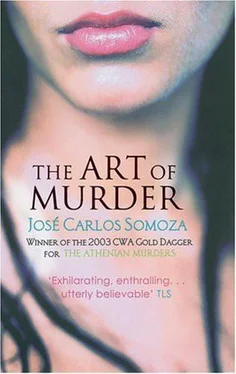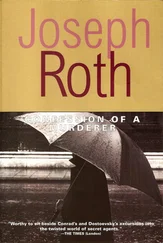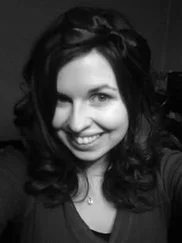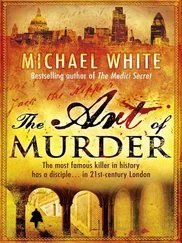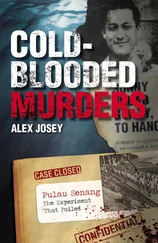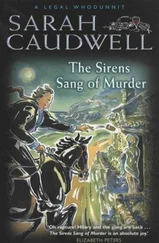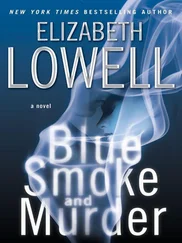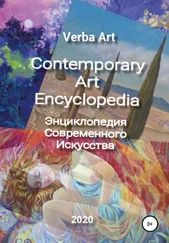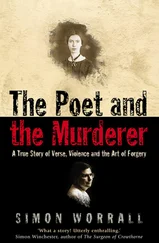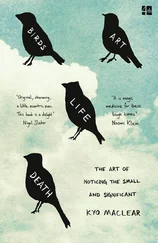Jose Somoza - Art of Murder
Здесь есть возможность читать онлайн «Jose Somoza - Art of Murder» весь текст электронной книги совершенно бесплатно (целиком полную версию без сокращений). В некоторых случаях можно слушать аудио, скачать через торрент в формате fb2 и присутствует краткое содержание. Жанр: Триллер, на английском языке. Описание произведения, (предисловие) а так же отзывы посетителей доступны на портале библиотеки ЛибКат.
- Название:Art of Murder
- Автор:
- Жанр:
- Год:неизвестен
- ISBN:нет данных
- Рейтинг книги:4 / 5. Голосов: 1
-
Избранное:Добавить в избранное
- Отзывы:
-
Ваша оценка:
- 80
- 1
- 2
- 3
- 4
- 5
Art of Murder: краткое содержание, описание и аннотация
Предлагаем к чтению аннотацию, описание, краткое содержание или предисловие (зависит от того, что написал сам автор книги «Art of Murder»). Если вы не нашли необходимую информацию о книге — напишите в комментариях, мы постараемся отыскать её.
Art of Murder — читать онлайн бесплатно полную книгу (весь текст) целиком
Ниже представлен текст книги, разбитый по страницам. Система сохранения места последней прочитанной страницы, позволяет с удобством читать онлайн бесплатно книгу «Art of Murder», без необходимости каждый раз заново искать на чём Вы остановились. Поставьте закладку, и сможете в любой момент перейти на страницу, на которой закончили чтение.
Интервал:
Закладка:
5
Light is the very last touch. Gerardo and Uhl are installing it in the farm living room. They have been at it since early in the morning, because the equipment is very delicate. The chiaroscuro lamps have been specially created for the exhibition by a Russian physicist. Clara stares at the strange fittings: metal bars from which protrude arms with bulbs on the end. They look to her like steel racks. 'You're going to see something incredible,' said Gerardo. They closed the blinds. In the dense darkness, Uhl flicked a switch and the lamps gave off a golden glow. It was light, but it did not illuminate. It seemed to paint the air a golden colour rather than to reveal objects. Thanks to the flashing speed of electricity, the entire room had become a seventeenth-century oil painting. A minimalist still life by Franz Hals; pret-a-porter Rubens; postmodern Vermeer. Standing opposite her, the only figure in this domestic tenebrist canvas, Gerardo was smiling.
'It's as if we were inside a Rembrandt picture, isn't it? Come on, you're the protagonist.'
Barefoot and naked, Clara walked towards the light. It was a friendly, tempting light, the dream of a suicidal moth: she could stare at it endlessly without it harming her eyes. There were gasps of admiration.
'You're a perfect work of art,' Gerardo praised her. 'You don't even need painting. Do you want to see yourself? Look.'
There was the sound of wood scraping along the floor, and she could see one of the mirrors being brought over. She caught her breath.
Somehow, in some way, she knew this was what she had been searching for all her life.
Her silhouette stood out from the darkness of a classical painting as if painted with golden brushstrokes. Her face and half the curtain of her hair were incrusted with amber. Clara blinked at her gleaming breasts, the lavish crown of her sex, the outline of her legs. As she moved, she sparkled like a diamond under the light, and became a different kind of work. Each of her gestures painted a thousand different canvases of herself.
‘I wouldn't mind having you at home under these lights,' she heard Gerardo say in the darkness. 'Naked Woman on a Black Background.'
She could hardly hear him. It seemed to her that everything she had dreamt of ever since she had discovered Eliseo Sandoval's artwork in her friend Talia's house, everything she had scarcely dared say or admit to herself when she decided to become a canvas, was here now in the reflection of her body under the chiaroscuro lights. She understood she had always been her own dream.
*
That morning the poses were easier. It was what Gerardo called 'filling in'. They had already chosen the exact colours: a deep red for her hair, drawn up in a bun; mother-of-pearl mixed with pink and yellow for the skin; a fine ochre line for the eyebrows; chestnut eyes with a tinge of crystal; her lips outlined in flesh tints; the areolas of her breasts a matt brown colour. After she had showered, washed and returned to her original primed colours, Clara felt better. She was exhausted, but she had reached the end of a long journey. The previous fortnight had been full of harsh poses, colour experiments, efforts to concentrate, and then the masterly brushstrokes Van Tysch had used to define her expression as she stared into the mirror, the slow passage of time. Only the final detail was left.
'The signature,' Gerardo said. 'The Maestro will sign the works in the rehearsal room at the Old Atelier this afternoon. And you will all pass into eternity,' he added with a smile.
Uhl drove the van. They turned on to the motorway and soon saw Amsterdam in the distance. The sight of that city, which had always seemed to Clara like a pretty doll's house, lifted her hypnotised spirits. They crossed several bridges and headed for the Museumsplein along narrow, tidy streets, accompanied by never-ending streams of bicycles and the clanking procession of trams. They spied the impressive bulk of the Rijksmuseum. Beyond it, in the pearly-grey midday light, they could see a huge mass of dense shadows. The sun's rays filtering through the clouds gave the massive structure an opalescent sheen. It was as though a tidal wave of oil were sweeping over Amsterdam. 'Rembrandt's Tunnel.'
They had decided to have a look at it before they went to the Old Atelier for the signature session. Clara was excited about discovering the mysterious place where she would be exhibited. They parked close to the Rijksmuseum. It was not exactly a hot summer's day, but she did not feel at all cold beneath the padded light sleeveless dress she was wearing. She also had on a pair of lined plastic slippers as well as the three labels that identified her as one of the original figures for Susanna Surprised by the Elders.
They walked into Museumstraat and found themselves face to face with the Tunnel almost unintentionally. It looked like the mouth of a huge mine covered with curtains. It was a horseshoe shape, with the U open towards the rear of the Rijksmuseum. The main entrance was protected by two rows of fences, flashing lights and white and orange vehicles with the word Politic written on the side. Men and women in dark-blue uniforms were on guard at the fences. Some tourists were taking photos of the colossal structure.
While Gerardo and Uhl went to talk to the policemen, Clara stopped to get a good look at the Tunnel. From the entrance, which was easily as tall as any of the great classical buildings in Amsterdam, the curtains rose and fell, dipping down or rising up to the clouds in the sky like a majestic circus tent, snaking in among the trees and enveloping them, blocking streets and cutting off the horizon. In between the two wings of the horseshoe was the central area of the Museumplein, with its artificial pond and monument. There was something strange and grotesque about this vast black shape squatting like a dead spider on Amsterdam's delicate cityscape, something Clara found hard to define. It was as though painting had become something else. As though it was not an art exhibition that was involved, but something infinitely more challenging. The entrance was covered by one of Rembrandt's famous last self-portraits. His face beneath the cap – his bulbous nose, the scrawny moustache and the wispy Dutch goatee beard – peered sceptically out at the world. He looked like a God weary of creating. The curtain over the exit was a blow-up of the photo of Van Tysch facing away from the camera. We go in through Rembrandt's chest, and come out through Van Tysch's back, Clara thought. The past and present of Dutch art. But which of the two geniuses was more enigmatic? The one who showed his painted face, or the one who hides his real identity? She could not decide. Gerardo came up to her.
'They're checking our documents so we can go in,' he said, pointing to the Tunnel. 'What do you make of it?' 'It's fantastic'
If s almost five hundred metres long, but it's bent in the shape of a horseshoe so it will fit into the park. You go in this end, and come out over there near the Van Gogh museum. Some parts of it are forty metres high. Van Tysch wanted it erected near the Rembrandthuis, cutting off streets and even emptying buildings, but of course they wouldn't let him. The curtains are made of a special material: it blocks out all exterior light and keeps the inside as black as a well, so the works will only be lit by the chiaroscuro lights. We can walk through it. But keep close to us.'
'Why? What could happen to me?' Clara asked with a smile.
'Well, tramps spend the night in there. And drug addicts slip in under cover of dark. And then there are the protest groups, the BAH and the others… yes, the BAH, the Bothered About Hyperdrama. You must have heard of them, haven't you?… They're our most faithful followers,' Gerardo smiled. 'Tomorrow they're holding a protest outside the Tunnel, but there are always a couple of trouble-makers who try to get in to put up posters. The police are on patrol inside the Tunnel, and arrest one or two of them every day. Come on, let's go.'
Читать дальшеИнтервал:
Закладка:
Похожие книги на «Art of Murder»
Представляем Вашему вниманию похожие книги на «Art of Murder» списком для выбора. Мы отобрали схожую по названию и смыслу литературу в надежде предоставить читателям больше вариантов отыскать новые, интересные, ещё непрочитанные произведения.
Обсуждение, отзывы о книге «Art of Murder» и просто собственные мнения читателей. Оставьте ваши комментарии, напишите, что Вы думаете о произведении, его смысле или главных героях. Укажите что конкретно понравилось, а что нет, и почему Вы так считаете.
